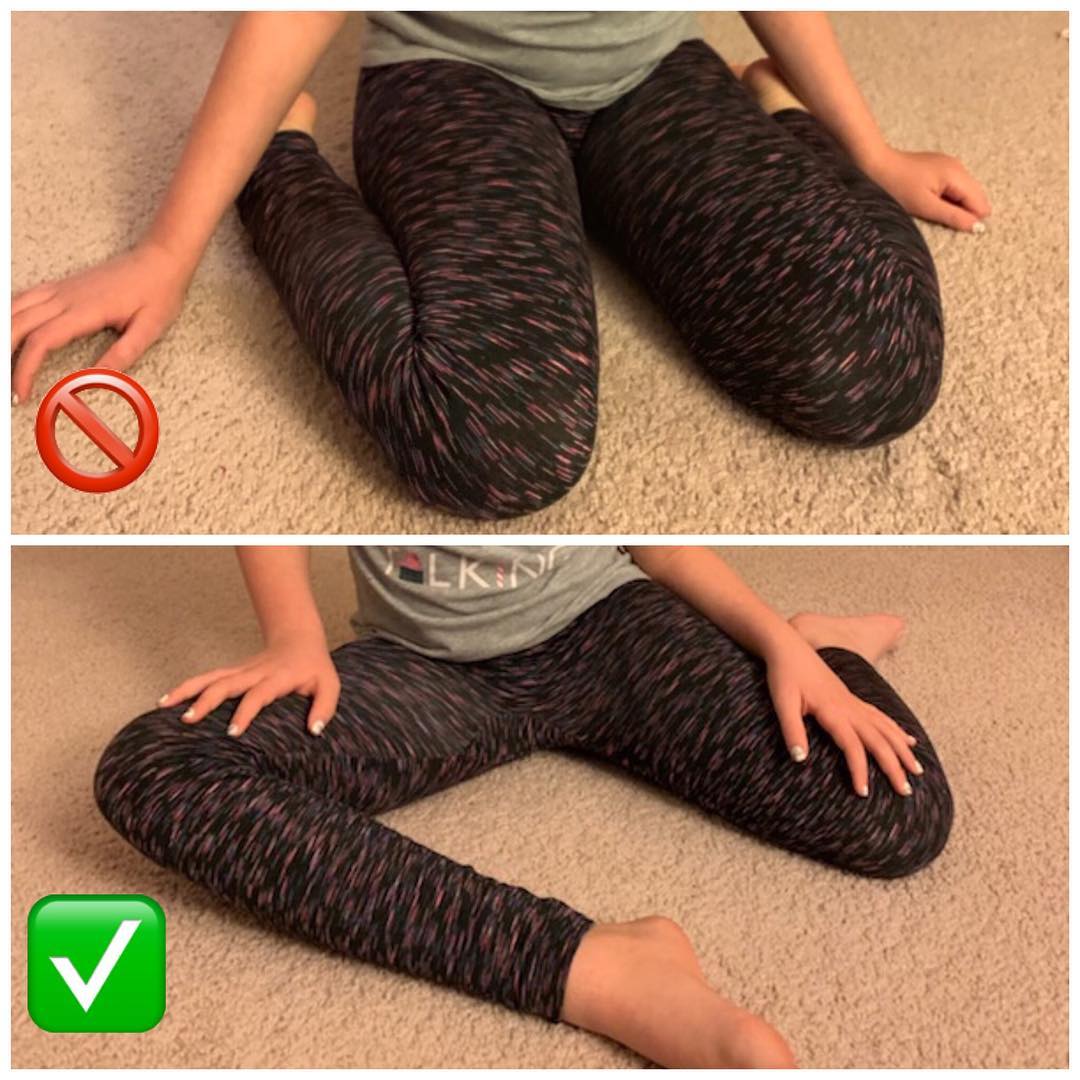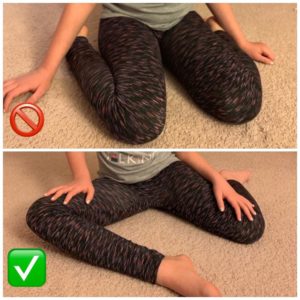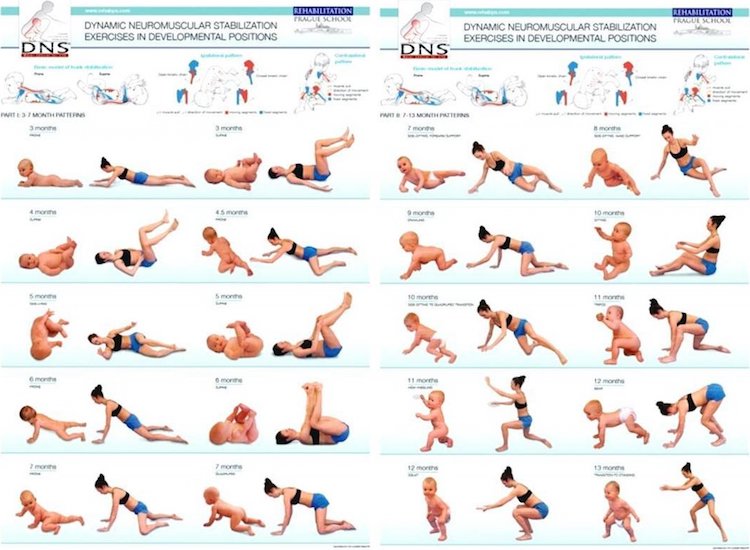“W Sitting” – No Big Deal Or A Sign Of An Underlying Issue?

Do you have kids that sit on the floor and play in the “w sitting” position on a regular basis?
Let’s talk about what “w sitting” might mean and why we encourage kids to play in various positions while they play with their toys.
 Why might a child sit in this position?
Why might a child sit in this position?
- Comfort! Children don’t have fully developed bones or fully developed joints, which makes it possible for them to sit in this position. Good luck trying to get an adult to comfortably sit in the “w” position! Also, children are very good at avoiding positions that cause them pain, so more often than not, this position is not painful.
- Stability! This position widens their base of support, and brings their center of mass closer to the floor where their toys are. The child probably feels more stable in this position, but could it be providing false stability?
A better look at this position…
Let’s look at this from a developmental perspective through the dynamic neuromuscular stabilization (DNS) lens. As a child progresses through the various movement stages of development (tummy time, to rolling, to crawling, to sitting, to squatting, to walking), “w sitting” is not a developmental stage in this movement process. They do spend time sitting in various positions, but “w sitting” is not an ideal position for proper development of the hip joints, and can add additional stress to developing knee joints.
So, what does all of this mean?
The “w sitting” position usually correlates with trunk weakness in other positions (like an oblique sit), which is why a child would prefer the more stable “w sitting” position. As stated before, this position widens the child’s base, and brings their center of mass lower to the ground. However, over time, the child will often sink lower into the position, losing the tone of their trunk muscles.
As a parent, what should you do if your child likes to sit in the “W” position?
Challenge your child to sit in various positions and continue to play. It will help develop their core stability. Which will also help improve their movement as they develop. Most importantly, don’t take the fun out of play time! Just encourage various sitting positions so that they don’t develop poor motor or movement patterns.
 262-373-9168
262-373-9168





